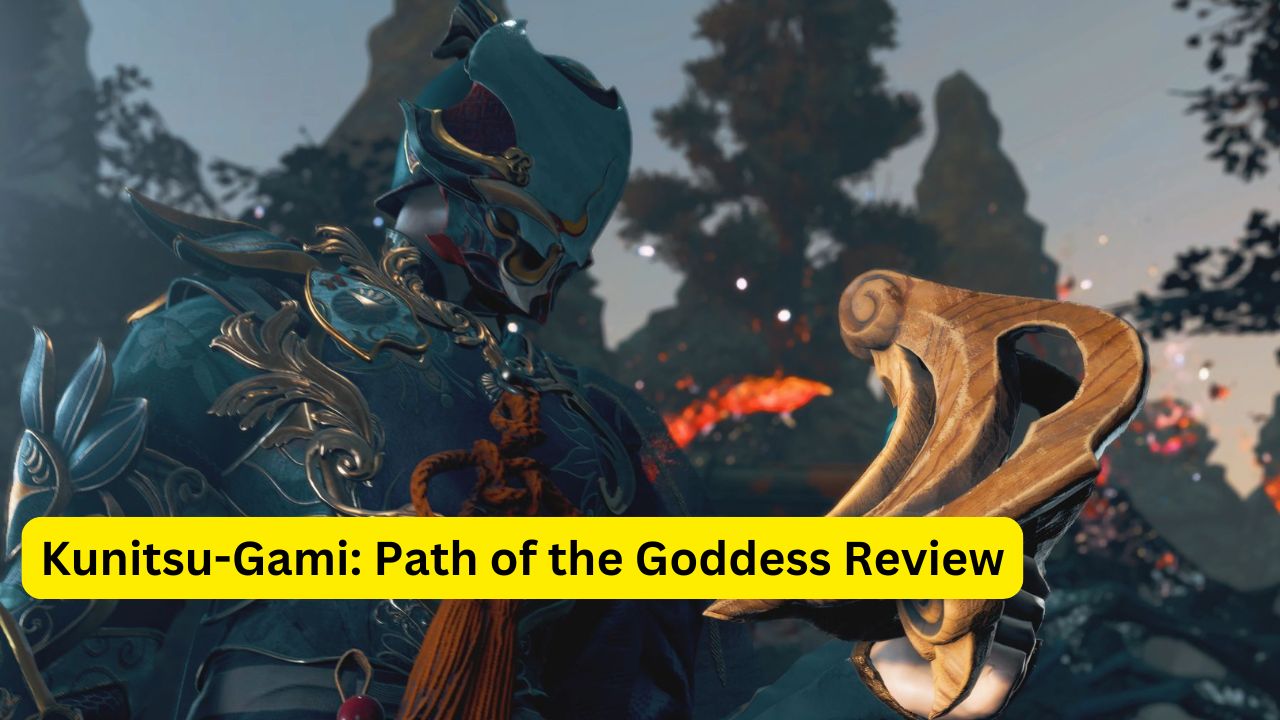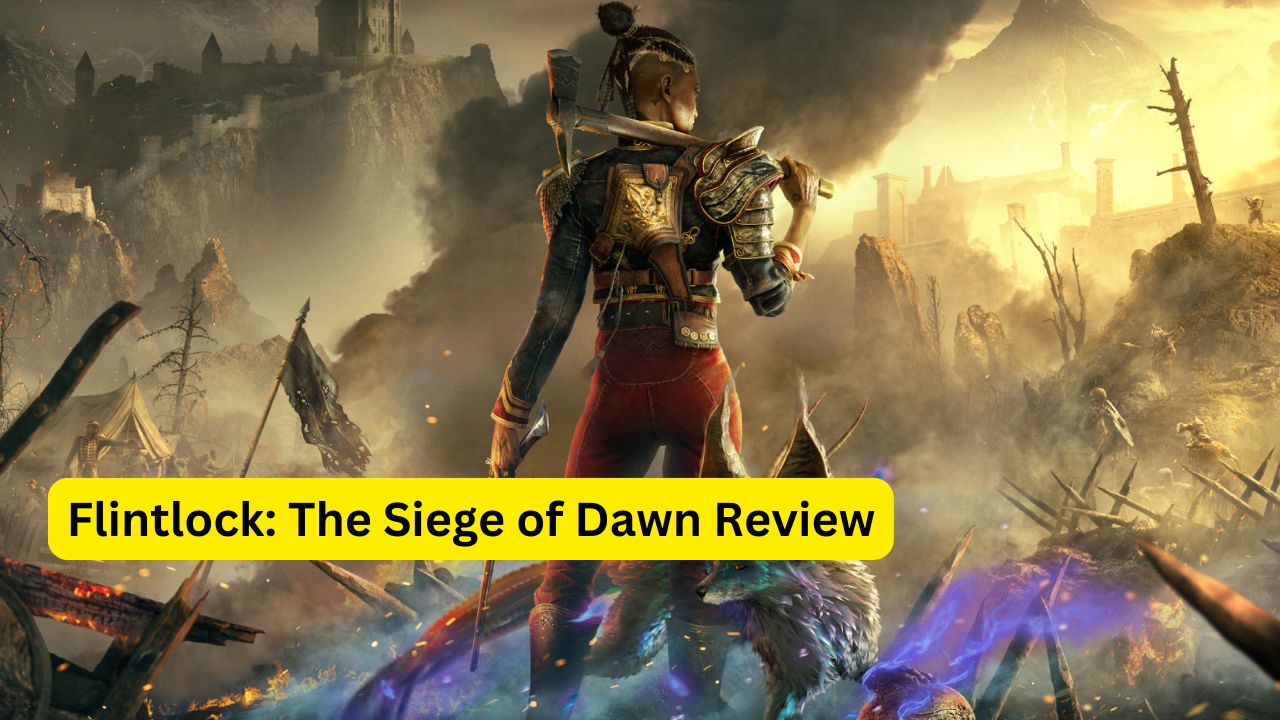Kunitsu-Gami: Path of the Goddess Review

Kunitsu-Gami: Path of the Goddess is a unique and innovative action-strategy game developed by Capcom, set against the backdrop of mystical feudal Japan.
This review explores the game’s mechanics, narrative, artistic direction, and overall appeal, offering a comprehensive examination of what makes it stand out in the current gaming landscape.
Overview of Kunitsu-Gami: Path of the Goddess
Released on July 19, 2024, on multiple platforms including PlayStation 5, Xbox Series X/S, and PC, Kunitsu-Gami invites players into a vibrant world where they assume the role of Soh, a spectral warrior tasked with protecting Yoshiro, a divine maiden.
The narrative unfolds on Mount Kafuku, which has been corrupted by a malevolent force known as the Seethe, manifesting as demons, spirits, and yokai. Players must guide Yoshiro through a series of challenges, purifying the land and restoring balance while engaging in a blend of action and strategy gameplay.
Gameplay Mechanics
Kunitsu-Gami combines elements of tower defence with action RPG mechanics, creating a gameplay loop that is both engaging and challenging.
Each stage is divided into two phases: daytime and nighttime. During the day, players collect crystals by purifying defilement and rescuing corrupted villagers.
These crystals are then used to carve a Spirit Path for Yoshiro to navigate toward the torii gate at the end of each level.
At night, the Seethe emerge, and players must defend against waves of enemies, utilizing both Soh’s combat skills and the abilities of the villagers they have recruited.
This dual-phase structure keeps the gameplay dynamic, requiring players to adapt their strategies based on the time of day and the challenges presented.
Combat and Strategy
Combat in Kunitsu-Gami is fast-paced and visually striking, featuring a variety of swordplay combos and abilities that players can unlock as they progress.
Soh can engage directly in battles, collecting orbs dropped by defeated enemies to enhance his powers and those of the villagers.
The game encourages a mix of direct action and strategic management, as players must assign roles to villagers and position them effectively on the battlefield.
The tower defence aspect is particularly interesting, as players can move villagers around the map and assign them, to different classes, creating a sense of agency and tactical depth.
However, some critics argue that the necessity of direct involvement in combat can detract from the traditional tower defence experience, where players typically observe their strategies unfold from a distance.
Narrative and Character Development
The story of Kunitsu-Gami is conveyed with minimal dialogue, relying instead on visual storytelling and environmental cues.
Players follow Yoshiro on her journey to cleanse the land, with the narrative focusing on themes of restoration and balance.
The emotional core of the game lies in the relationship between Soh and Yoshiro, with players experiencing her growth and the impact of their actions on the world around them.
The game’s cinematics, though sparse, effectively convey the stakes of Yoshiro’s mission, making players care about her journey.
The attention to detail in character design and animations adds depth to their personalities, allowing players to form a connection with them as they progress through the game.
Artistic Direction and Sound Design
Kunitsu-Gami boasts a stunning visual style, deeply rooted in Japanese folklore. The game’s art direction is characterized by a diverse colour palette and intricate designs that bring the world of Mount Kafuku to life.
Each enemy, villager, and environmental element is crafted with care, contributing to an immersive experience that feels both authentic and fantastical.
The soundtrack complements the visuals, enhancing the emotional weight of the gameplay and the narrative. The music is inspired by traditional Japanese sounds, adding to the cultural richness of the game.
Players can even unlock remixed tracks from Capcom’s beloved title, Okami, further establishing a connection between the two games and enriching the overall experience.
Reception and Critique
Kunitsu-Gami has received generally positive reviews, with critics praising its unique blend of genres and engaging gameplay.
The game’s innovative mechanics and artistic presentation have garnered attention, positioning it as a standout title in Capcom’s lineup.
However, some players have expressed concerns about the repetitive nature of the gameplay loop, particularly the transition between day and night phases, which can feel monotonous over time.
While the game successfully merges action and strategy, some critics argue that it doesn’t fully capture the essence of traditional tower defence games, as players are often required to micromanage rather than observe their strategies unfold from a distance.
This aspect may appeal to some players seeking a more hands-on experience, but it could alienate those who prefer the classic tower defence style.
Conclusion
Kunitsu-Gami: Path of the Goddess is a captivating blend of action and strategy, set in a beautifully crafted world inspired by Japanese folklore.
Its unique gameplay mechanics, emotional narrative, and stunning visuals make it a noteworthy addition to the gaming landscape.
While it may not fully satisfy traditional tower defence enthusiasts, it offers a fresh take on the genre that is both engaging and thought-provoking.
As players guide Yoshiro on her journey to cleanse Mount Kafuku, they will encounter a rich tapestry of characters, challenges, and breathtaking environments that invite exploration and strategic thinking.
Whether you are a fan of action RPGs, tower defence games, or simply appreciate artistic storytelling, Kunitsu-Gami is a title that deserves attention and exploration.


